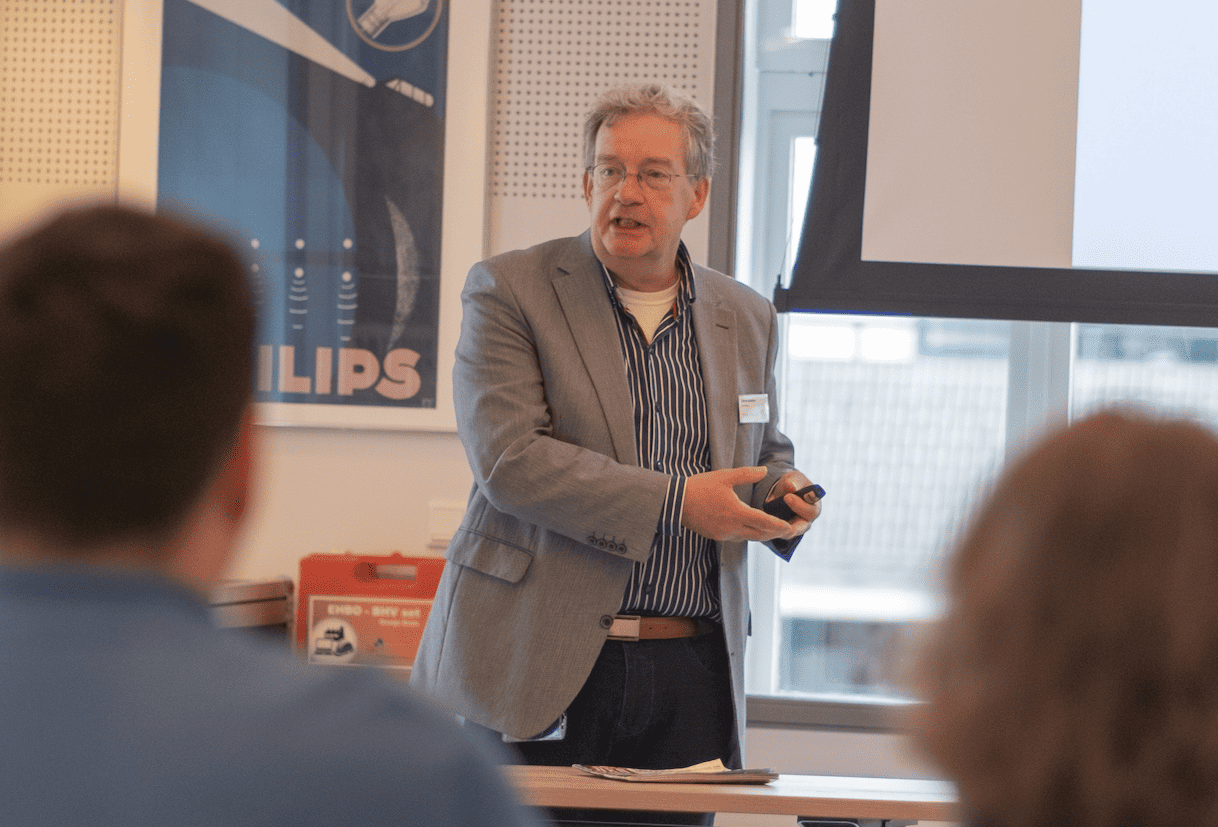
Every innovation issue is typified by the same formula, the same number of steps: 1) what do we want to achieve with the innovation? 2) what must we do to achieve that? 3) how will that intervention work? and 4) within what context will that work? The answer to those questions works like an algorithm. That algorithm has a name: the CIMO logic.
The CIMO logic reads as follows: For this issue in context [C], you can apply this intervention [I], which by these mechanisms [M] produces this outcome [O]. The CIMO logic is all in one: a structure for reporting, a one-sentence management summary, a coat hanger from which the main questions hang, and a way to give meaning to the answer to an innovation issue (more on the scientific foundation behind the CIMO logic can be found in this paper).
It starts with the context
Something in us is looking for principles that always work. In practice, however, nothing always works the same way for everything and everyone. A new school system may work very well for one student and not at all for another. A new logistics process design may operate fantastically in one country and not at all in another. A new drug may be very effective for men but have many side effects for women. I could go on like this for a while. Whether an innovative handle works or doesn’t work depends on context. Things work within a context.
That innovative hold itself is the intervention [I]; that which you are actually going to do differently, make differently, or make work differently. By using the word intervention, you emphasize the change. That is ultimately what innovation does: create change. But exactly how that change works is another story. The “WHAT?” and “HOW?” are different sides of the innovation coin. The answer to the “HOW?” is formed by the working mechanisms [M] behind the intervention. Sometimes these mechanisms are already visible before the ‘WHAT?’ is clear, but these mechanisms often become apparent afterward. A good example of the latter is Fleming’s invention of penicillin. Penicillin was discovered by accident, and only after that discovery did it become clear to Fleming how it worked. Context also played a major role in the eventual success of penicillin. Indeed, during WWII, the U.S. government invested a lot of money in developing Penicillin, suspecting that it could eventually save many wounded soldiers. The latter was actually the case.
Outcome-oriented or value-oriented?
For the [O] of “outcome,” one can see two paths: outcome-oriented and value-oriented. An innovation issue that takes the outcome-oriented path has a concrete and measurable goal as its starting point: more vaccinations, fewer customer service complaints, less waste or scrap in the production process, et cetera. The innovation issue is then the answer to the questions of what to do and how to do it to achieve that concrete goal. An innovation issue that takes the value-based path usually starts with a completely different question: why do we want to innovate a process, a way of working, or a product? From what value and belief are we doing it? Do we want to be greener, happier, more inclusive, or healthier? Achieving the value becomes the end goal, and from there, the question arises of what to do and how to do it to realize that value. This value-based path exhibits similar logic to Simon Sinek’s “Start with Why“: first the why, then the how, and finally the what.
Improve or change?
Personally, I prefer innovations that have taken the value-based path. They often lead to real change. Those who walk the results path are predominantly more on the optimization or improvement track. Also important but less exciting (with exceptions). But the fundamental change that values-driven innovations can create is only realized if the motivation for that change is intrinsic. In other words, only if the values are intrinsically anchored will this path lead to real change.
The algorithm of the innovation question, the CIMO logic, sounds so incredibly simple. Practice, of course, shows otherwise. Ultimately, it is about motives and drives, understanding for whom you are actually doing it and why, knowledge of theoretical and practical principles to sharpen the mechanisms, and the creative thinking power to actually realize a different ‘WHAT’. The formula of the algorithm is a piece of cake; the implementation is a damned tough job where the structure of the CIMO logic merges with the chaos of the creative innovation process.








